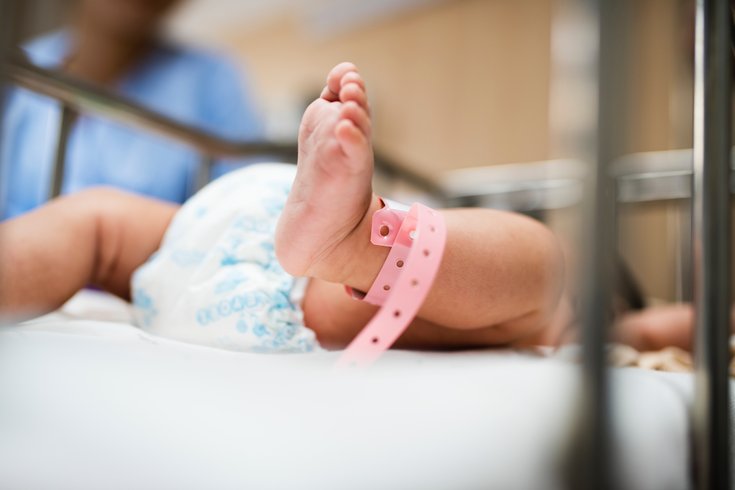
April 10, 2019
 Source/Pexels.com
Source/Pexels.com
Through its Healing at Home pilot program, Penn Medicine is working to get mothers and their newborn infants discharged from the hospital more quickly. The program also aims to improve at-home care, including lactation counseling.
Dr. Jessica Gaulton remembers the feeling she had shortly after giving birth to her son at the Hospital of the University of Pennsylvania.
Despite being ready to head home, Gaulton was told she needed to stay three days to meet all the discharge criteria.
"I wondered why we couldn't leave earlier," Gaulton said. "What I wanted more than anything was to get back to my daughter and husband and bond with my son in the comfort of our own home."
Now, Gaulton is leading an effort to get mothers discharged from the hospital more quickly and provide them better support at home, where many need additional lactation support or other assistance.
Gaulton, a neonatology fellow at the Children's Hospital of Philadelphia and HUP, spearheaded Healing at Home, a pilot program that redesigns the postpartum experience. It streamlines inpatient workflows to decrease length of stay and individualizes at-home services to provide high-value care.
If implemented across the University of Pennsylvania Health System, Gaulton projects Healing at Home could reduce the hospital stay of more than 3,000 patients by 40 percent and save more than $1.5 million.
The Healing at Home program is one of four new projects taken on by Penn Medicine's Innovation Accelerator Program, which helps bring original and creative ideas to fruition. The hope is that the innovations improve patient care, reduce health care costs and provide solutions to some of health care's biggest challenges.
The program has selected 31 projects since it launched several years ago. About 10 have become fully realized, with permanent health care infrastructure in place.
Dr. Jessica Gaulton is a neonatology fellow at the Children's Hospital of Philadelphia. 
"I think a lot of people wonder whether you actually can change health care," Chief Innovation Officer Roy Rosin said. "And what we're seeing is – absolutely. You can change health care. You can achieve high-value care. You can make it better for multiple parties."
Each year, Penn faculty submit about 100 proposals to the Innovation Accelerator Program. Typically four to six proposals are selected from about 15 finalists. The four 2018 winners presented their proposals on Tuesday as part of the annual "Pitch Day."
Gaulton's team found that mothers who vaginally delivered low-risk, newborn infants typically stayed at HUP for three days. Yet, about 80 percent of them wished to leave earlier.
Additionally, the infants only received their various screenings 36 hours after being born – despite it being safe to do so as early as 24 hours after birth, Gaulton said. Discharge delays create a bottleneck in the maternity unit, sometimes forcing mothers to give birth in hallways and triage areas.
As part of the Healing at Home pilot program, HUP providers bumped up the screenings for 58 babies, reducing length of stay by 40 percent.
"This was a 19-hour decrease, or one less hospital day," Gaulton said. And none of the patients were readmitted to the hospital or seen in the emergency department within the 30 days that followed.
But the challenges for mothers and their newborn mothers don't end there. Many mothers struggle with postpartum depression, breastfeeding issues or other challenges.
Gaulton remembers feeling isolated and anxious once she came home, knowing she would not see her obstetrician until six weeks later.
"Even being a pediatrician, I had no idea what to do," Gaulton said. "I felt lost. What we wanted to focus on was improving that transition, making it smoother."
To assist mothers, Gaulton's team created Penny, a texting service that allowed mothers to quickly seek assistance from their medical providers. They received more than 2,000 texts from 92 patients over a two-month period. The top need involved breastfeeding – more than 40 percent needed lactation assistance.
"We answered a lot of questions by text," Gaulton said. "For those women who had red flags, we set them up with our lactation specialists to either do a telemedicine visit or visit them in homes. There was continuity there, because those lactation specialists saw them in the hospital and they saw them at the home. They could see them multiple times, if needed."
Additionally, HUP set up mothers with private nurses who visited the mothers at home, evaluating the mother and her newborn within 48 hours of returning home. The private nurses are a benefit covered by most insurance plans that mothers often declined previously, Gaulton said, perhaps because it was not properly explained.
Three other 2018 proposals are being entered into the accelerator program:
• The Center for Opioid Recovery and Engagement aims to better connect people with opioid use disorder with medication for addiction treatment, which has a higher success rate than traditional addiction treatment. The center has more than doubled the administration of medication for addiction treatment. Nearly 70 percent of patients who connected with a certified recovery specialist remained in treatment a month later.
• LiveAware is an electronic dashboard that identifies patients at risk for hepatocellular carcinoma, the most common type of liver cancer among adults. It also facilitates the ordering of screening for the disease. Screening among at-risk patients increased by 26 percent.
• The Mental Health Engagement, Navigation and Delivery team developed a solution to identify patients with psychiatric comorbidities at admission, increasing identification eightfold. Coupled with enhanced inpatient care and improved efforts to connect patients to ongoing mental health care, this could improve patient outcomes and save the health system millions of dollars each year.